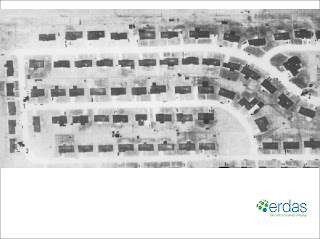
This map was classified and recoded with ERDAS 9.3 using the supervised method. At least 3 training sites were picked for each land use category. Overall, it appears to be more accurate and shows the mix of residential and trees in a close up view. There are still some problems do to the pixel colors of urban and offshore currents being the same thus all being classified as urban. Also, as in the unsupervised map parts of the airport runway are either classified as urban because of the concrete or agriculture because of the color match with the farming areas. Maybe some post-processing editing would be necessary to correct these issues. There may be other tools in ERDAS that could fix the problems too or maybe more training areas would have corrected some of the issues.






